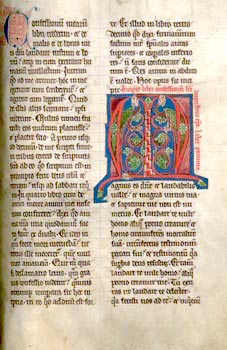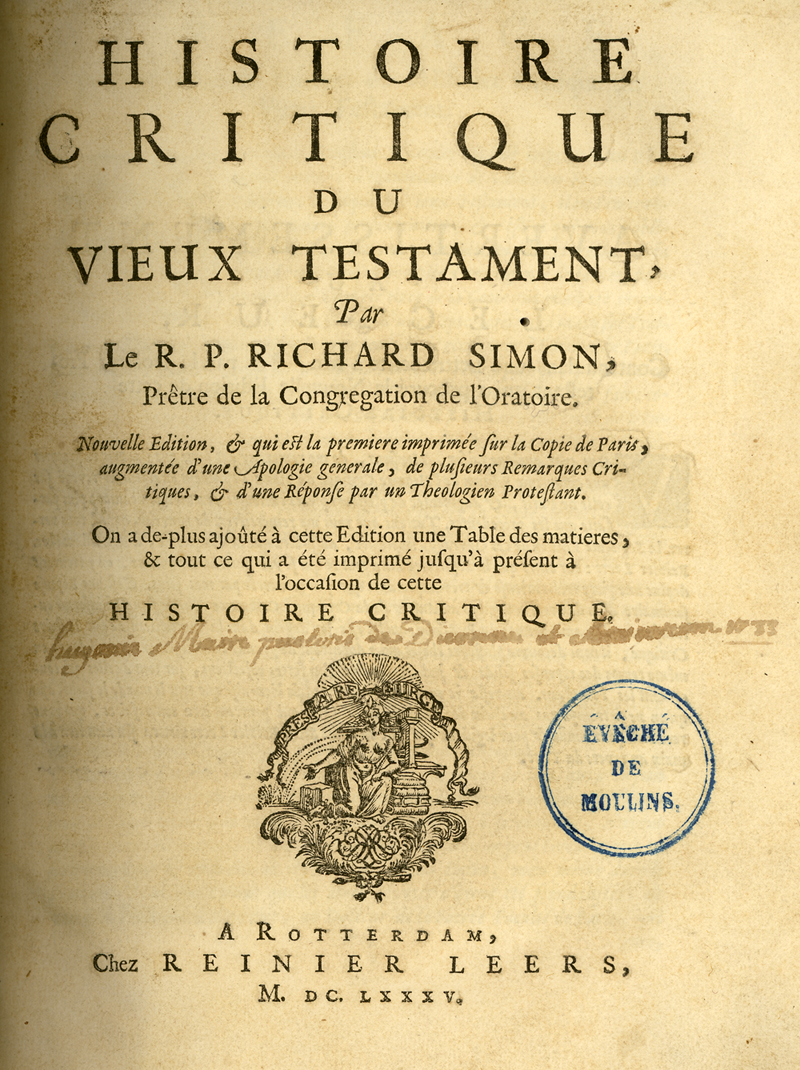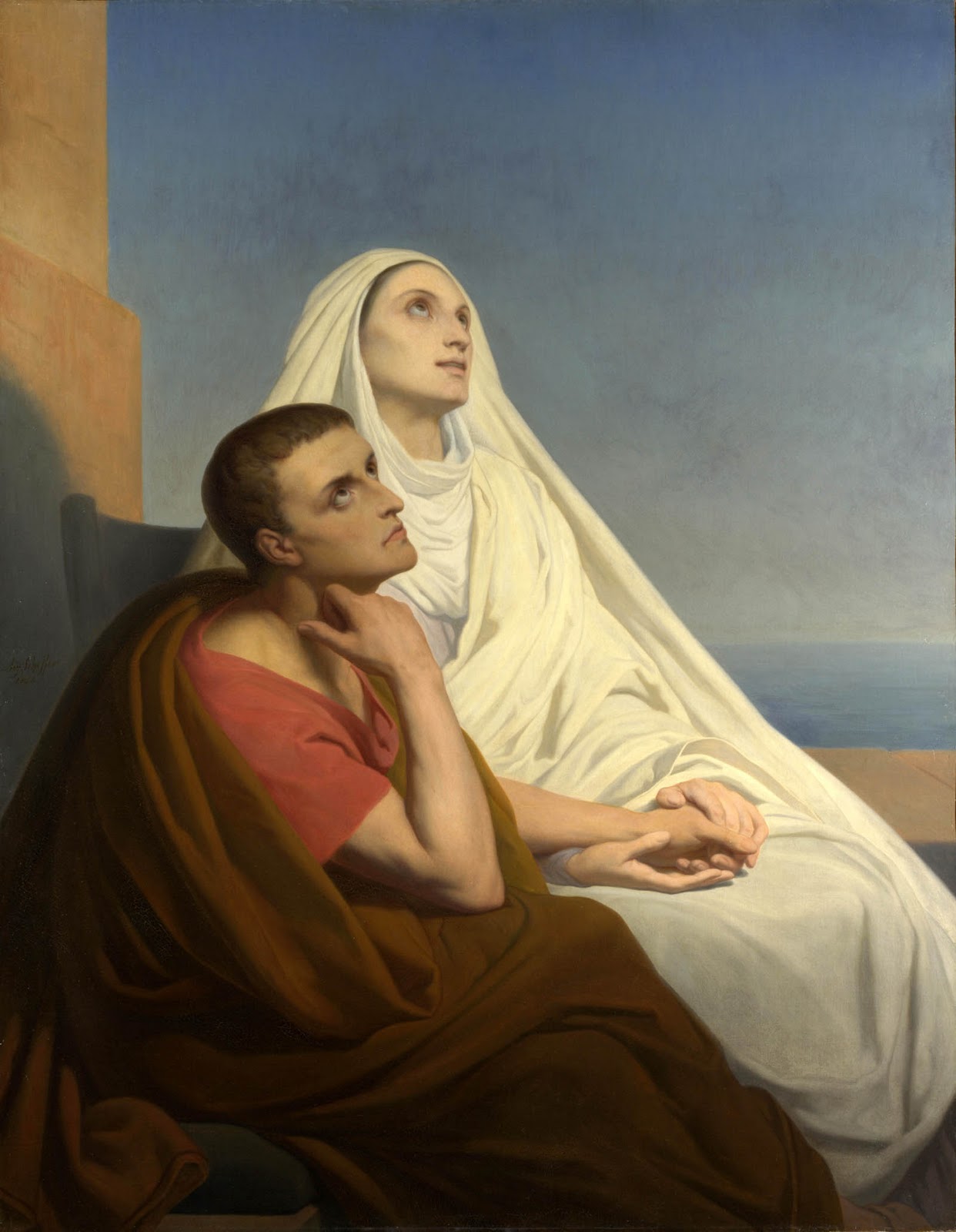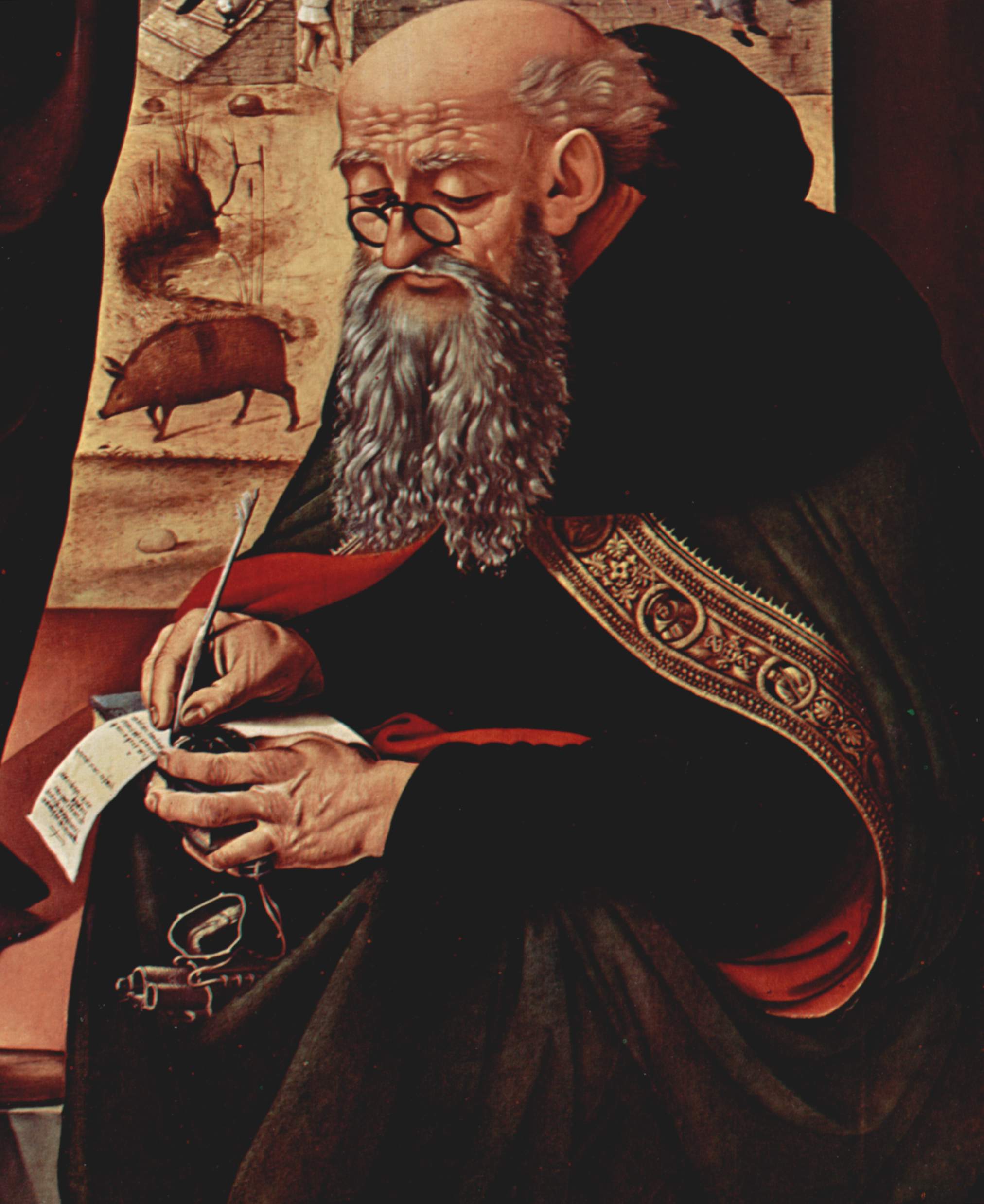|
Confessions (St. Augustine)
''Confessions'' (Latin: ''Confessiones'') is an autobiographical work by Saint Augustine, consisting of 13 books written in Latin between AD 397 and 400. The work outlines Saint Augustine's sinful youth and his conversion to Christianity. Modern English translations of it are sometimes published under the title ''The Confessions of Saint Augustine'' in order to distinguish the book from other books with similar titles. Its original title was ''Confessions in Thirteen Books'', and it was composed to be read out loud with each book being a complete unit. ''Confessions'' is generally considered one of Augustine's most important texts. It is widely seen as the first Western Christian autobiography ever written (Ovid had invented the genre at the start of the first century AD with his ''Tristia'') and was an influential model for Christian writers throughout the Middle Ages. Henry Chadwick wrote that ''Confessions'' will "always rank among the great masterpieces of western literature ... [...More Info...] [...Related Items...] OR: [Wikipedia] [Google] [Baidu] |
Augustine Confessiones
Augustine of Hippo ( , ; la, Aurelius Augustinus Hipponensis; 13 November 354 – 28 August 430), also known as Saint Augustine, was a theologian and philosopher of Berber origin and the bishop of Hippo Regius in Numidia, Roman North Africa. His writings influenced the development of Western philosophy and Western Christianity, and he is viewed as one of the most important Church Fathers of the Latin Church in the Patristic Period. His many important works include ''The City of God'', '' On Christian Doctrine'', and '' Confessions''. According to his contemporary, Jerome, Augustine "established anew the ancient Faith". In his youth he was drawn to the eclectic Manichaean faith, and later to the Hellenistic philosophy of Neoplatonism. After his conversion to Christianity and baptism in 386, Augustine developed his own approach to philosophy and theology, accommodating a variety of methods and perspectives. Believing the grace of Christ was indispensable to human freed ... [...More Info...] [...Related Items...] OR: [Wikipedia] [Google] [Baidu] |
Carthage
Carthage was the capital city of Ancient Carthage, on the eastern side of the Lake of Tunis in what is now Tunisia. Carthage was one of the most important trading hubs of the Ancient Mediterranean and one of the most affluent cities of the classical world. The city developed from a Canaanite Phoenician colony into the capital of a Punic empire which dominated large parts of the Southwest Mediterranean during the first millennium BC. The legendary Queen Alyssa or Dido, originally from Tyre, is regarded as the founder of the city, though her historicity has been questioned. According to accounts by Timaeus of Tauromenium, she purchased from a local tribe the amount of land that could be covered by an oxhide. As Carthage prospered at home, the polity sent colonists abroad as well as magistrates to rule the colonies. The ancient city was destroyed in the nearly-three year siege of Carthage by the Roman Republic during the Third Punic War in 146 BC and then re-developed as Roman Car ... [...More Info...] [...Related Items...] OR: [Wikipedia] [Google] [Baidu] |
CORE (research Service)
CORE (Connecting Repositories) is a service provided by the based at The Open University, United Kingdom. The goal of the project is to aggregate all open access content distributed across different systems, such as repositories and open access journals, enrich this content using text mining and data mining, and provide free access to it through a set of services. The CORE project also aims to promote open access to scholarly outputs. CORE works closely with digital libraries and institutional repositories. Service description There are existing commercial academic search systems, such as Google Scholar, which provide search and access level services, but do not support programmable machine access to the content. This is seen with the use of an API or data dumps, and limits the further reuse of the open access content (e.g., text and data mining). There are three access levels to content: * access at the granularity of papers * analytical access and granularity of collections * ... [...More Info...] [...Related Items...] OR: [Wikipedia] [Google] [Baidu] |
Biblical Exegesis
Biblical criticism is the use of critical analysis to understand and explain the Bible. During the eighteenth century, when it began as ''historical-biblical criticism,'' it was based on two distinguishing characteristics: (1) the concern to avoid dogma and bias by applying a neutral, non-sectarian, reason-based judgment to the study of the Bible, and (2) the belief that the reconstruction of the historical events behind the texts, as well as the history of how the texts themselves developed, would lead to a correct understanding of the Bible. This sets it apart from earlier, pre-critical methods; from the anti-critical methods of those who oppose criticism-based study; from later post-critical orientation, and from the many different types of criticism which biblical criticism transformed into in the late twentieth and early twenty-first centuries. Most scholars believe the German Enlightenment () led to the creation of biblical criticism, although some assert that its roots ... [...More Info...] [...Related Items...] OR: [Wikipedia] [Google] [Baidu] |
Trinity
The Christian doctrine of the Trinity (, from 'threefold') is the central dogma concerning the nature of God in most Christian churches, which defines one God existing in three coequal, coeternal, consubstantial divine persons: God the Father, God the Son (Jesus Christ) and God the Holy Spirit, three distinct persons sharing one ''homoousion'' (essence) "each is God, complete and whole." As the Fourth Lateran Council declared, it is the Father who begets, the Son who is begotten, and the Holy Spirit who proceeds. In this context, the three persons define God is, while the one essence defines God is. This expresses at once their distinction and their indissoluble unity. Thus, the entire process of creation and grace is viewed as a single shared action of the three divine persons, in which each person manifests the attributes unique to them in the Trinity, thereby proving that everything comes "from the Father," "through the Son," and "in the Holy Spirit." This doctrine ... [...More Info...] [...Related Items...] OR: [Wikipedia] [Google] [Baidu] |
Book Of Genesis
The Book of Genesis (from Greek ; Hebrew: בְּרֵאשִׁית ''Bəreʾšīt'', "In hebeginning") is the first book of the Hebrew Bible and the Christian Old Testament. Its Hebrew name is the same as its first word, ( "In the beginning"). Genesis is an account of the creation of the world, the early history of humanity, and of Israel's ancestors and the origins of the Jewish people. Tradition credits Moses as the author of Genesis, as well as the books of Exodus, Leviticus, Numbers and most of Deuteronomy; however, modern scholars, especially from the 19th century onward, place the books' authorship in the 6th and 5th centuries BC, hundreds of years after Moses is supposed to have lived.Davies (1998), p. 37 Based on scientific interpretation of archaeological, genetic, and linguistic evidence, most scholars consider Genesis to be primarily mythological rather than historical. It is divisible into two parts, the primeval history (chapters 1–11) and the ancestr ... [...More Info...] [...Related Items...] OR: [Wikipedia] [Google] [Baidu] |
Philosophical Presentism
Philosophical presentism is the view that only present entities exist (or, equivalently, that everything is present). According to presentism, then, there are no wholly past or merely future entities whatsoever. In a sense, the past and the future do not exist for presentists—past events have happened (have existed) and future events will happen (will exist), but neither exist at all since they do not exist now. Presentism is a view about temporal ontology that contrasts with eternalism—the view that past, present, and future entities exist (that is, the ontological thesis of the block universe theory)—and with no-futurism—the view that only past and present entities exist (that is, the ontological thesis of the growing block theory). Historical antecedents Augustine of Hippo proposed that the present is analogous to a knife edge placed exactly between the perceived past and the imaginary future and does not include the concept of time. Proponents claim this should be s ... [...More Info...] [...Related Items...] OR: [Wikipedia] [Google] [Baidu] |
Saint Monica
Monica ( – 387) was an early North African Christian saint and the mother of Augustine of Hippo. She is remembered and honored in the Catholic and Orthodox Churches, albeit on different feast days, for her outstanding Christian virtues, particularly the suffering caused by her husband's adultery, and her prayerful life dedicated to the reformation of her son, who wrote extensively of her pious acts and life with her in his '' Confessions''. Popular Christian legends recall Monica weeping every night for her son Augustine. Life Monica is assumed to have been born in Thagaste (present-day Souk Ahras, Algeria). She is believed to have been a Berber on the basis of her name. She was married early in life to Patricius, a Roman pagan, who held an official position in Thagaste. Patricius had a violent temper and appears to have been of dissolute habits; apparently his mother was the same way. Monica's almsgiving, deeds and prayer habits annoyed Patricius, but it is said that he alway ... [...More Info...] [...Related Items...] OR: [Wikipedia] [Google] [Baidu] |
Justina (empress)
Justina (; c. 340 – c. 388) was a Roman empress. She was initially the wife of the rebel emperor Magnentius () and was then married to Valentinian I (), with whom she had four children, including the emperor Valentinian II () and the empress Galla (). Possibly a relative of the Constantinian dynasty (), she was Valentinian's second wife after Marina Severa, and step-mother of the ''augustus'' Gratian () and the mother-in-law of the ''augustus'' Theodosius I (). Her infant son Valentinian was made emperor shortly after her husband's death in November 375. According to Late Antique ecclesiastical history, Justina was an Arian Christian, and began to promote this christology after her husband died, bringing her into conflict with Ambrose, the Nicene Christian bishop of Mediolanum (Milan). In 387, fleeing from the invasion of the Italian Peninsula by the emperor Magnus Maximus (), Justina took her children to the Balkans – including the child-emperor Valentinian II – and sec ... [...More Info...] [...Related Items...] OR: [Wikipedia] [Google] [Baidu] |
Anthony The Great
Anthony the Great ( grc-gre, Ἀντώνιος ''Antṓnios''; ar, القديس أنطونيوس الكبير; la, Antonius; ; c. 12 January 251 – 17 January 356), was a Christian monk from Egypt, revered since his death as a saint. He is distinguished from other saints named Anthony, such as , by various epithets: , , , , , and . For his importance among the Desert Fathers and to all later Christian monasticism, he is also known as the . His feast day is celebrated on 17 January among the Orthodox and Catholic churches and on Tobi 22 in the Coptic calendar. The biography of Anthony's life by Athanasius of Alexandria helped to spread the concept of Christian monasticism, particularly in Western Europe via its Latin translations. He is often erroneously considered the first Christian monk, but as his biography and other sources make clear, there were many ascetics before him. Anthony was, however, among the first known to go into the wilderness (about AD 270), whic ... [...More Info...] [...Related Items...] OR: [Wikipedia] [Google] [Baidu] |
Marius Victorinus
Gaius Marius Victorinus (also known as Victorinus Afer; fl. 4th century) was a Roman grammarian, rhetorician and Neoplatonic philosopher. Victorinus was African by birth and experienced the height of his career during the reign of Constantius II. He is also known for translating two of Aristotle's books from ancient Greek into Latin: the ''Categories'' and ''On Interpretation'' ('' De Interpretatione''). Victorinus had a religious conversion, from being a pagan to a Christian, "at an advanced old age" (c. 355). Life Victorinus, at some unknown point, left Africa for Rome (hence some modern scholars have dubbed him ''Afer''), probably for a teaching position, and had great success in his career, eventually being promoted to the lowest level of the senatorial order. That promotion probably came at the time when he received an honorific statue in the Forum of Trajan in 354. Victorinus' religious conversion to Christianity (c. 355), "at an advanced old age" according to Jerome, made a ... [...More Info...] [...Related Items...] OR: [Wikipedia] [Google] [Baidu] |
Simplicianus
Simplician ( la, Simplicianus; it, Simpliciano) was Bishop of Milan from 397 to 400 or 401 AD. He is honoured as a Saint in the Roman Catholic and Eastern Orthodox Churches and his feast day is August 14. Life Simplician was born about 320 probably in Rome and still young he became a churchman. He became expert in the Holy Scripture and very educated. In about 355 he took an active part in the conversion to Christianity of the philosopher Marius Victorinus. When in 374 Ambrose was elected bishop of Milan and baptized, Simplician became his teacher of doctrine. Ambrose used to call Simplician ''father'', as a sign of spiritual relationship. Probably in this period Simplician moved to Milan where he remained. Simplician took also an active part in the conversions of both Alypius of Thagaste and Augustine of Hippo. The meeting between Augustine and Simplican occurred in Milan in 386 and it is recorded in Augustine's Confessions. After his conversion, Augustine also called Simp ... [...More Info...] [...Related Items...] OR: [Wikipedia] [Google] [Baidu] |






